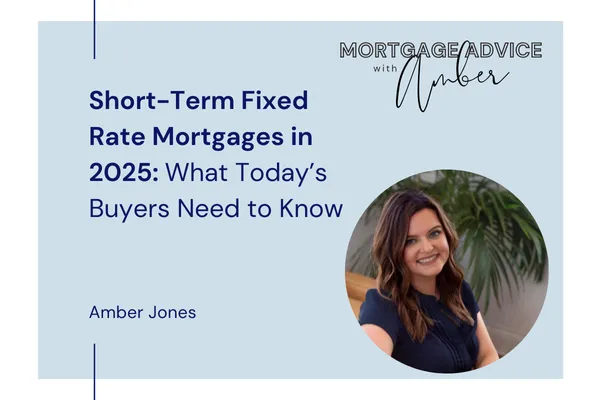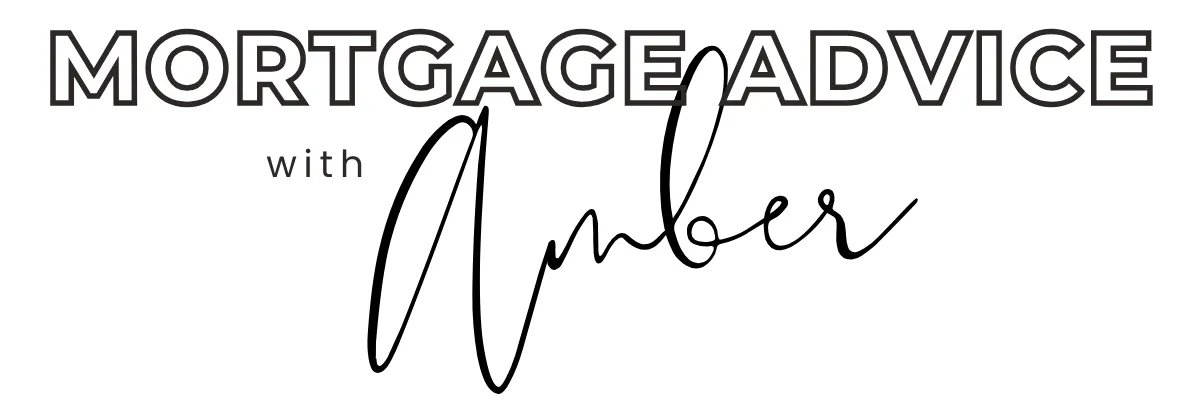
Short-Term Fixed Rate Mortgages
If you were a teenager or young adult during the 2008 housing crash, you probably remember more about how it felt than exactly what caused it. The fear. The uncertainty. Families losing their homes. Mortgage terms like “ARM” (Adjustable Rate Mortgage) became shorthand for instability.
It’s understandable that anything other than a 30-year fixed mortgage might still sound like a risk.
But here's what most people don’t realize: today’s adjustable rate mortgages in 2025 are not the same as the ones that contributed to the housing crisis. Not even close.
“Today’s short-term fixed options are structured very differently, and for the right buyer, they can be a smart strategy to get into a home now.”
— Amber Jones, Certified Mortgage Advisor
Let’s explore what’s changed, how ARMs work today, and why they’re making a comeback—especially for buyers in their 30s and 40s looking for more affordable paths to homeownership.
What Is an ARM in 2025?
An Adjustable Rate Mortgage (ARM) today is often referred to by mortgage professionals as a short-term fixed option. That’s because while the term "adjustable" may sound unpredictable, the rate is actually fixed for an initial period—usually 3, 5, 7, or 10 years.
After that initial fixed term ends, the rate adjusts periodically based on current market conditions and your specific loan terms. The adjustments are typically tied to indexes like the SOFR (Secured Overnight Financing Rate).
But—and this is key—these adjustments have strict limits to protect you from sudden spikes.
🎥 Watch: Amber explains how today’s ARMs work—and who they’re right for.
Why Adjustable Rate Mortgages Got a Bad Reputation
The ARMs of the early 2000s were a different breed entirely. They included risky features that contributed to widespread foreclosures, such as:
Pick-a-Payment Options
Borrowers could choose to pay less than the full interest owed each month, causing their loan balance to grow—a concept known as negative amortization.Prepayment Penalties
If you sold or refinanced before the fixed period ended, you could face a hefty fee—often six months of interest.Stated Income Loans + Zero Down
Borrowers weren’t required to prove income or assets, and many purchased homes with no money down using what was called an "80/20" loan (two mortgages covering 100% of the purchase).
The result? Many homeowners found themselves in loans they couldn’t afford to keep.
What’s Different About ARMs in 2025
Today’s ARMs are regulated and much more conservative:
1. Full Documentation is Required
Lenders now require a full picture of your income and debts, whether you're salaried or self-employed. This includes W-2s, tax returns, or bank statements depending on the loan type.
2. No Negative Amortization
Every ARM now requires at least the full interest to be paid each month. Your loan balance only goes down—never up.
3. No Prepayment Penalties on Primary Residences
You’re free to refinance or sell without penalty. (Some exceptions exist for investment properties.)
4. Rate Caps and Adjustment Rules
Your rate can’t increase endlessly. Caps limit how much your rate can go up at each adjustment and over the life of the loan. Adjustments now happen at predictable intervals—usually every 6 months or annually after the fixed period ends.
Why ARMs Are Gaining Popularity Again
Let’s be honest: housing affordability is a major issue in 2025. Rising home prices and elevated mortgage rates have priced many would-be buyers out of the market.
Here’s why ARMs are suddenly looking attractive again:
Short-term rates are currently lower than long-term fixed rates.
Most buyers don’t stay in a home or loan for 30 years.
Many plan to refinance within 3–5 years anyway.
So why lock into a higher long-term rate when a short-term fixed option could help you:
Lower your monthly payment now
Increase your buying power
Start building equity sooner
When Does a Short-Term Fixed Option Make Sense?
A short-term fixed ARM could be a strong fit if:
You plan to move, refinance, or upgrade your home within 3–7 years
You’re comfortable tracking market rates in the future
You want to prioritize affordability today without locking in a high rate long-term
It may not be a good fit if:
You plan to stay in your home long-term without refinancing
You’re uncomfortable with any level of future uncertainty
You prefer the predictability of a 30-year fixed, even at a higher rate
Frequently Asked Questions (FAQ)
Are ARMs safe in 2025?
Yes, when structured properly. Today’s ARMs are required to meet strict lending guidelines, including caps on rate adjustments, full income documentation, and no negative amortization.
What does SOFR mean in a mortgage?
SOFR stands for Secured Overnight Financing Rate. It’s a benchmark interest rate that many ARMs now use to determine future rate adjustments.
What happens after the fixed period ends?
Your rate adjusts—usually once every 6 or 12 months—based on market conditions and the terms of your loan. However, it can’t exceed the lifetime cap or adjustment limits.
Can I refinance out of an ARM?
Yes. In fact, many buyers use an ARM as a bridge loan strategy, planning to refinance before the adjustable period begins.
Is an ARM better than a 30-year fixed mortgage?
It depends on your situation. If you expect to move or refinance within a few years, an ARM might save you money upfront. But if you’re planning to stay long-term, a fixed loan may offer more peace of mind.
Final Thoughts
If you’re a Millennial or Gen Xer who's hesitant about adjustable rate mortgages because of what you felt during the housing crash—fear, loss, instability—you’re not alone. But knowledge is power. Today’s short-term fixed mortgage options are safer, smarter, and more transparent than ever.
They're not for everyone. But they could be exactly what makes homeownership possible for you right now.
👉 Want personalized advice?
Book a free 15-minute call with me, and we can go over all your questions and concerns.
www.loansbyamberjones.com/book-a-call

